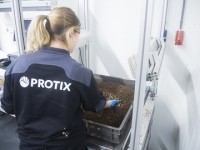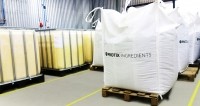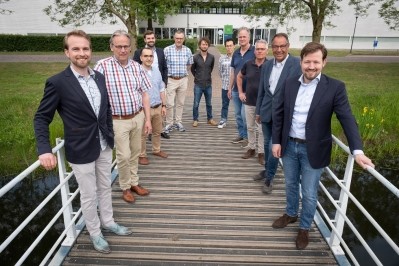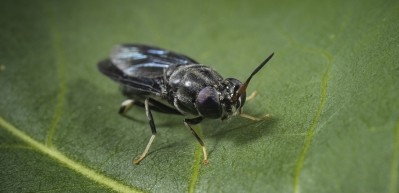Protix is launching the first insect fed salmon brand
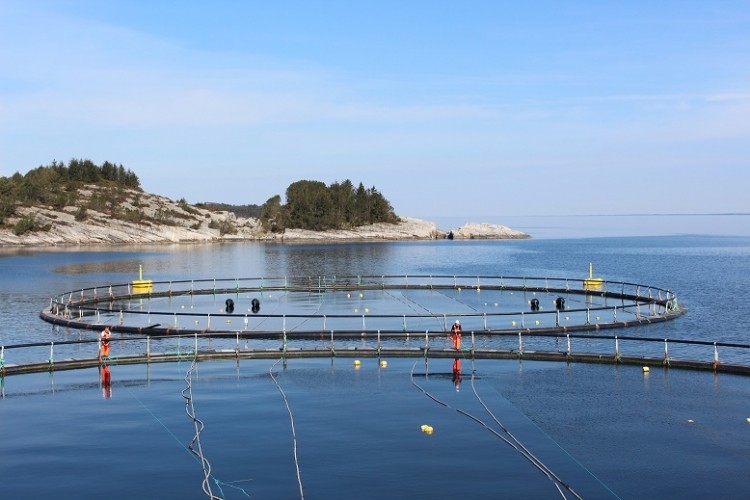
That collaborative effort aimed at developing a feed for salmon derived from Protix’s Black Soldier Fly (BSF) larvae meal, ProteinX.
Tarique Arsiwalla, founder and chief commercial officer at Protix, told us that Friendly Salmon will be commercialized in much the same as the Dutch insect company’s live larvae fed egg brand, Oerei. That egg brand is currently on the shelves of a small regional Dutch retailer and is set to go national in a large Dutch supermarket chain soon, he explained.
Aquaculture is expected to grow and fishmeal, as well as fish oil, are finite resources, so there is an urgent need to find replacements for such marine ingredients in the diets of carnivorous fish like salmon, he stressed.
Trials
The AquaFly project, he said, included trials where Protix’s insect derived meal completely replaced the fishmeal during the growth phases of salmon in fresh and saltwater.
“The control diets had 35% fishmeal for the freshwater stage and 10% fishmeal for the seawater stage.
“The insect meal fed salmon grew at the equivalent rate of the control diets to market weight of 4kg. [It was] a long-term trial that covered both the fresh and seawater phases of growth.
“We saw very little variation in terms of FCR, growth or health, confirming that even the last remaining fishmeal can be successfully replaced in commercial salmon diets.”
The diets were industry standard salmon diets, the only differential in the trial formulation was the use of insect protein instead of fishmeal, he said. “There were no additional additives or other new ingredients used in the trial diet.”
Blindfolded tasting panels also determined the salmon from either the control or fishmeal free trial diet tasted the same.
“For the high end salmon applications such as sushi, taste is critical. But the experts found no significant difference in the fishmeal and insect fed salmon.”
Arsiwalla said the current demand for fishmeal is around 6m tons per year, with aquaculture accounting for some 3.5m tons of that. “So the potential is huge.”
Currently, however, production capacity for the whole industry is the limiting factor. “We are in the process, though, of scaling up, building our second production facility in the Netherlands.”
Protix is also working with Bühler to develop the technology to build insect protein factories in various parts of the globe, a process aimed at a substantial increase in such meal volumes.
Insect protein feeding trials in fish – an overview
Freshwater fish with omnivorous diets perform well on insect diets, with trials that have replaced 25% of fishmeal with black soldier flies or locusts showing no adverse growth effects for tilapia (van Huis 2013; Makkar 2014), according to a November 2017 published review of insects for feed and food, led by Darja Dobermann of Rothamsted Research in the UK.
That review noted that up to 75% of fishmeal in Nile tilapia diets has been replaced with housefly maggot meal without any adverse effects (Wang 2017) while results with mealworms fed to catfish have shown successful replacement of 40%-80% of the normal diet without adverse effects (Makkar 2014).
“Replacing fishmeal in carnivorous fish diets has proven more difficult. Trials with sea bass show success when up to 19.5% of the fishmeal is replaced with black soldier fly larvae (Magalhães et al. 2017), and for gilthead sea bream, a replacement of up to 25% or 50% of fishmeal with mealworm meal gave positive results (Iaconisi 2017; Piccolo 2017),” found the research team.
Monetizing sustainability, price stability
The idea then, at this stage for the insect industry, is to market larvae derived meal on a fishmeal replacement platform, to monetize the natural and sustainability aspects, said Arsiwalla. “That will work by selecting the right retail channels, matching fish farmers and feed mills behind it. We involve the entire value chain in what we call a “blue shift” towards a marine resource independent aquaculture.”
Insect meal can also offer the feed sector an ingredient that has an amino acid profile similar to fishmeal, but, crucially, stability in pricing compared to that marine resource; fishmeal has experienced a lot of volatility in recent years, he said.
Insect protein suppliers, once at scale in terms of production capacity, will be able to provide mid/long-term contracts to feed mills or farmers with price and volume requirements standardized, he added.
Environmental credentials of insect meal
In terms of the environmental credentials of insect meal production itself, the Protix founder said a life cycle analysis (LCA) of insect production really has to be done on a case-by-case basis. How sustainable a process is very much depends on the insect species used, their rate of growth, and several other factors, he continued.
“We undertook an LCA for our current facility and based on that received environmental credits from the Dutch authorities. For our second upcoming facility we will undertake a new LCA taking into account the new logistical parameters as well as further scale and efficiency improvements.”
He said the local sourcing of feedstock for the insects from large-scale operators is critical in ensuring a reduction in transport related emissions.
BSF typically need wet feedstock. Protix is working with amongst others local fruit processors who previously would have send their cutting leftovers to anaerobic digesters. By capturing the nutrients in the fruit leftovers to rear its larvae instead, the insect company said it is able to close the nutrient cycle more effectively.
The drying process selected is fundamental also in terms of energy utilization. “Freeze drying as a worst case example would have a very high footprint. It sucks energy.”
Protix, instead, uses a low pressure and low temperature evaporation based drying method: “It removes water and uses less energy," said Arsiwalla.
In defense of fishmeal....
Reacting to a National Geographic article about the Protix salmon feed, IFFO’s Andrew Mallison, said while insect meal may be a theoretical alternative, the production of the millions of tons needed to replace fishmeal is currently not viable.
“When it is clear that the amount of fishmeal and fish oil is not sufficient to meet the growing demand for feed manufacture and, in the best interests of the fish farming industry, the raw material sources for feed should be maximized, it makes little sense to exclude these valuable, responsibly sourced and highly effective ingredients.”
“The practice of feeding fish to fish is labelled as both inefficient and unsustainable in the [National Geographic] article, but I would argue that responsibly sourced and used strategically, fishmeal and fish oil are both an efficient and sustainable feed choice. The growing management of wild capture fisheries has ensured that in recent years stocks are in fact steady and not declining (UN FAO State of World Fisheries and Aquaculture 2016)."
Mallison said that over 45% of the global production of fishmeal and fish oil is now independently certified as being safe and environmentally responsible, including in its sourcing of raw materials, which is "a figure that far exceeds any other source of feed ingredient.”
FeedNavigator is hosting Feed Protein Vision early next month. The face-to-face event will look at developments in insect protein for feed as well as a raft of other innovative technologies aimed at extending the basket of ingredients available for use as protein sources in both fish, poultry, pig and dairy farming. REGISTER NOW for Feed Protein Vision, 6-7 March, Amsterdam.
